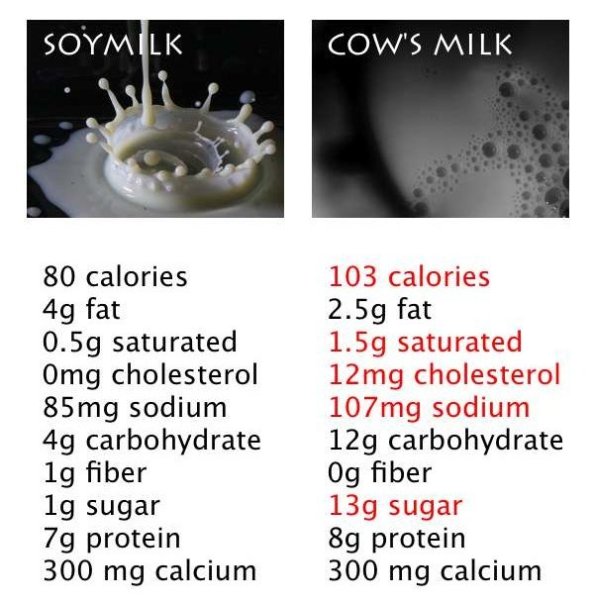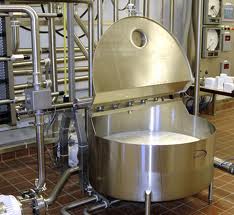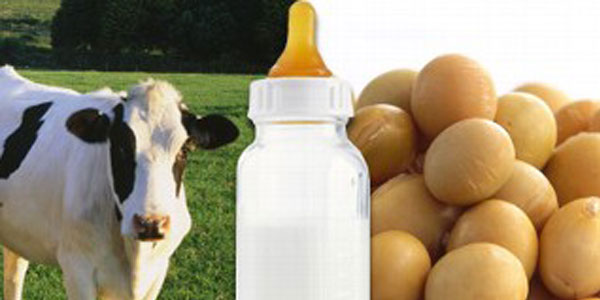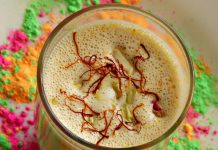Soy milk is the liquid residue of cooked soybeans. However, many types of soy milk on the market are processed and not made with real soy beans. Fresh soy milk is best.
Soy milk is a popular dairy alternative and it has long been a traditional beverage in Indonesia. Some people opt to drink soy milk because they are lactose intolerant or lactose sensitive, while others drink it for ethical reasons (such as an interest in animal welfare or in reducing your environmental footprint by eating lower on the food chain) or health reasons (such as wanting to reduce cholesterol intake or eat lower on the food chain).
The health benefits of soy milk are controversial, in part because (like milk) soy is a common food allergen. However, it is generally accepted that soy milk is a healthy alternative to cow’s milk and many believe that soy milk is healthier than dairy milk.
Let’s compare 100ml portions of soy milk vs. cow’s milk :
- Cow’s milk has 61 calories. Soymilk has 33 calories.
- Cow’s milk contains 3.34 grams of fat. Soymilk contains 1.91 grams of fat.
- Cow’s milk has 14 milligrams of cholesterol and no dietary fiber. Soymilk contains 1.3 grams of fiber and has zero cholesterol.

Cow’s milk contains a full range of amino acids. Soymilk also contains a full range of amino acids. Both contain plenty of protein. Cow’s milk actually has one- half gram more protein than the 100-gram portion of soymilk.
As for the nine essential amino acids in protein necessary for sustaining life, cow’s milk and soy milk contain nearly identical amounts, but cow’s milk does win this one by a whisker, containing a mere one-fifth of a gram more essential amino acids than the soy. That may be a hollow victory for milk lovers because one of the nine essential amino acids is methionine. Cow’s milk contains more than twice as much methionine as does soymilk. The center atom of methionine is sulfur. Too much animal protein creates an acid condition in the blood which the body must neutralize by taking calcium from the bones. . Nations eating the most animal protein have the highest rates of osteoporosis.
Soy milk contains greater amounts of other amino acids including arginine, alanine, aspartic acid, and glycine. Arginine slows the growth of cancers by strengthening the immune system. Alanine aids in the metabolism of sugars. Aspartic acid increases stamina and plays a vital role in metabolism, acting as an anti-oxidant. Glycine is necessary for brain and nervous system functioning and muscle/energy metabolism.

When milk is pasteurized, Vitamins A, C, and D are destroyed. The same can be said for those vitamins when soymilk is manufactured.
Soy milk does contain more than four times the amount of thiamin (Vitamin B-1) and nearly twice the amount of niacin (Vitamin B-3) as does cow’s milk. Soymilk also contains more magnesium, copper, and manganese than does cow’s milk.
In order to absorb calcium, one needs magnesium. Copper also aids in bone formation. One early sign of osteoporosis is a deficiency in copper. Soy milk contains twelve times the amount of copper as does cow’s milk.
Soy milk also contains 42 times the amount of manganese as does cow’s milk. Manganese is also needed for bone formation. People with anemia rely upon manganese for iron storage. Trace amounts of manganese are essential for neural transmissions, protein metabolism, and many other body functions.





